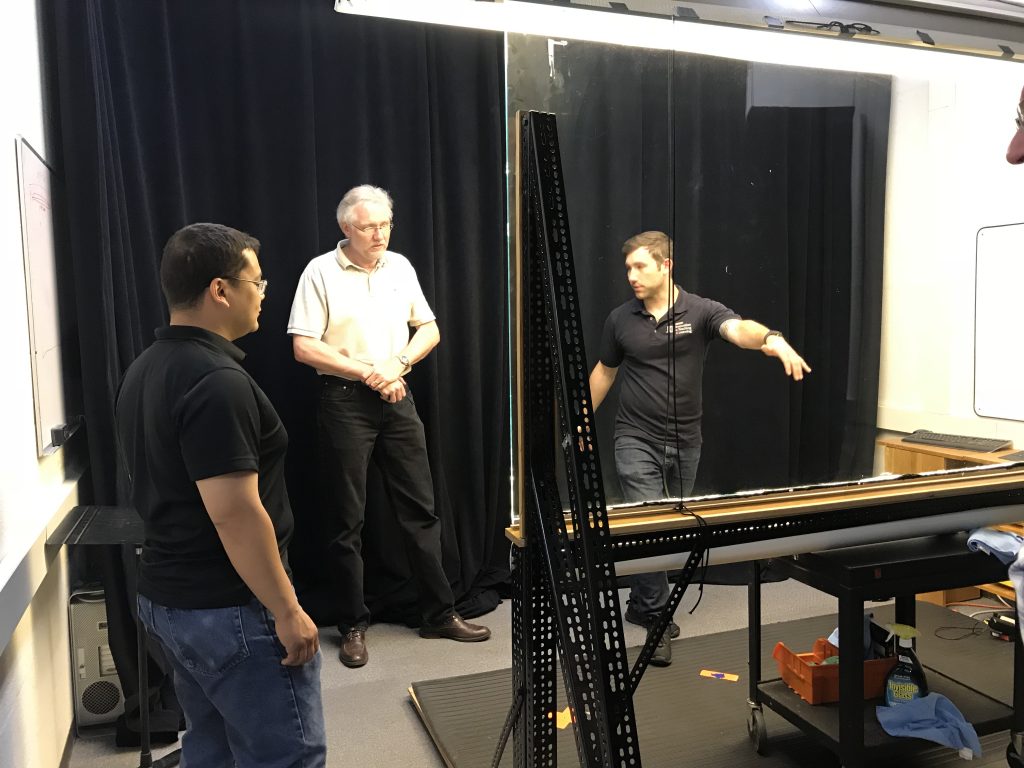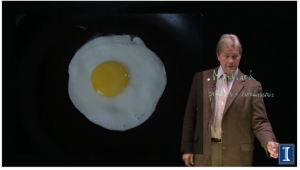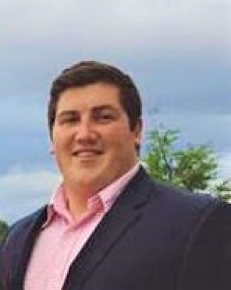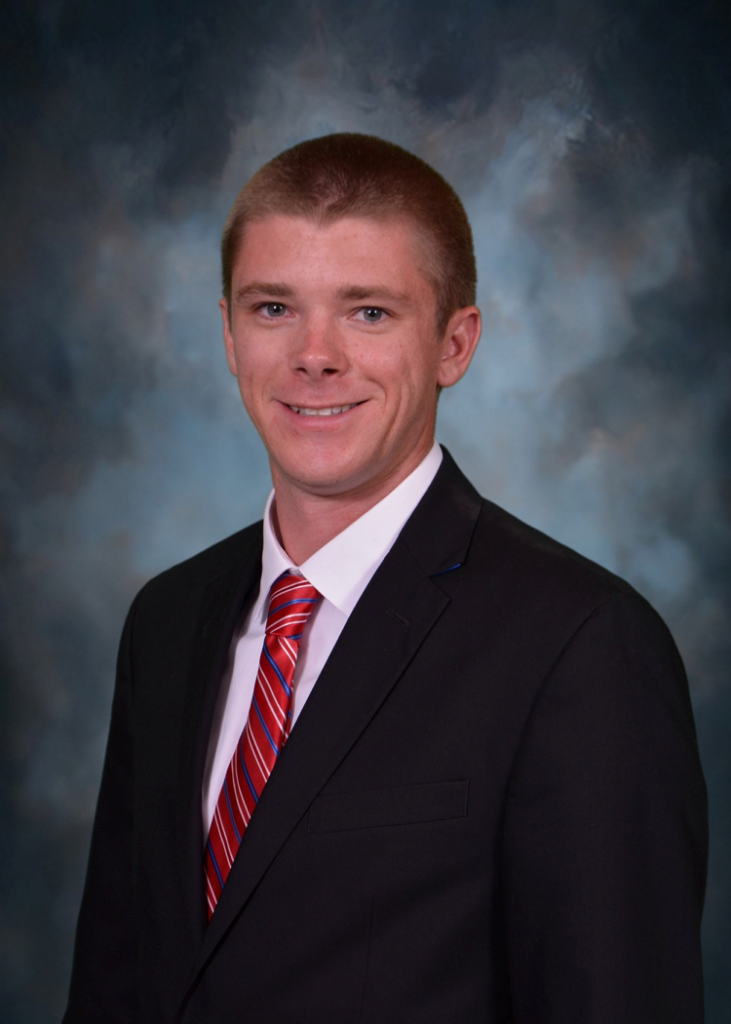Tag Archives: difm
New Faces at DIFM
Ammar Hoque is currently an undergraduate in UIUC studying Applied Mathematics/Economics (minor in Computer Science). He has previously worked as an NCSA affiliate in a project known as KnowEng Center- a Bioinformatics knowledge network for genomic researchers. Currently, Ammar is working to automate trial designs for the DIFM experiments, by standardizing data received from the field. He will also work on automating the data analysis of experiments.
New Equipment Used On DIFM Fields
The Data-Intensive Farm Management project is expanding our ability to obtain electroconductivity data on trial fields! Dr. Luciano Shiratsuchi is now using a GSSI Profiler EMP 400, a piece of electromagnetic induction equipment, that measures apparent soil electrical conductivity (ECa).
The advantage of this functioning principle is that we can map ECa with a larger window. The Profiler can be run with a 4 wheeler using a plastic sled; it is the only ECa mapper on the market with 16 different frequencies, and it convenient and practical for no till and strip till fields.
Lightboard Studio

Lightboard Studio is a dedicated tool designed for producing instructional videos currently at the University of Illinois. This studio allows for a “chalkboard-like” presentation with a slide or video superimposed in front of a presenter. Members of the DIFM team are planning on using this tool to produce instructional and marketing videos to allow easy distribution to farmers and other potential collaborators. In the above picture, Professor Tony Grift and graduate student Robert Reis are introduced to how to present on the platform.
Click here for more information on the Lightboard Studio.

New Faces at DIFM
Image
 George Hoselton is a first year Graduate Research Student at Illinois State University, where he recently earned his Bachelor of Science Degree in Agribusiness. He is currently working with Dr. Maria Boerngen with Data-Intensive Farm Management on his master’s thesis project, regarding a better understanding of how farmers perceive nutrient loss.
George Hoselton is a first year Graduate Research Student at Illinois State University, where he recently earned his Bachelor of Science Degree in Agribusiness. He is currently working with Dr. Maria Boerngen with Data-Intensive Farm Management on his master’s thesis project, regarding a better understanding of how farmers perceive nutrient loss.
New Faces at DIFM
Image

Brendan Kuhns grew up in a small farm town approximately 15 miles north of Champaign, received his undergraduate degree from the University of Illinois and is now pursuing his master’s degree in the Department of Agricultural and Biological Engineering. During his college career he has worked on his home farm, for Case New Holland, and John Deere in various product engineering roles related to harvesters. Kuhns was the Instructor of Record for a course in Off-Road Equipment and the Teaching Assistant of other similar courses, and will be a graduate research assistant in the 2018-2019 school year.
Presentations of DIFM Research
George Hoselton gave a presentation at the WERA-72 Annual Meeting at Kansas State University in June 2018, entitled “Voluntary Compliance: Encouraging Best Management.”
Assistant Professor Taro Mieno Visits the University of Illinois
Taro Mieno spent a week at the University of Illinois, Urbana-Champaign, during which he made substantial progress in research working with German, Brittani, and Aolin. Specifically, they have been working on the value of soil sampling, profit-maximizing length of experimental plots, and the economically optimal management zone delineation. He also came up with a future plan on what research topics with PI David Bullock.
Corn Growers’ Field Lab Gets New Funding
The DIFM project has been awarded $70K over two years to perform additional research on the Illinois Corn Growers’ Field Lab. The primary goal of this body of research is to evaluate a range of remote sensing technologies to enhance research conducted at the Illinois N Field lab. This research would facilitate the development of expertise in image analysis and integration with other field information to better understand crop growth dynamics under different N treatments. The remote sensing information will be used to not only increase understanding of treatment responses with high spatial and temporal resolution but also to increase the confidence in estimations generated by yield monitors. It will also create preliminary information to be used in the preparation of grant proposals to conduct new studies in the same field.
New Funding Source
Luciano Shiratsuchi and Lisa Fultz approved an internal budget of $70,000 from the Louisiana State University (LSU) to build a Digital Agriculture Laboratory to support DIFM in cloud data processing and storage. The initial plan is to invest in equipment (electrical conductivity machines, on-the-go sensors, drones and workstations) to promote multi-disciplinary work, provide teaching materials, and to start up a Precision Agriculture Program at LSU.


Following this trip, Kuhns concluded that the majority of Colombian farmers currently lack the ability to run DIFM trials. However, demonstration trials will begin at Servicio Nacional de Aprendizaje (SENA), a technical school in Colombia, with hopes of passing the practice on to farmers as equipment is upgraded.
Members of the Data-Intensive Farm Management project has since submitted a grant to CGIAR to develop low-cost sensing technology for these farmers, that would allow them to participate in our trials. The detailed results of the trip is available to DIFM researchers upon request.